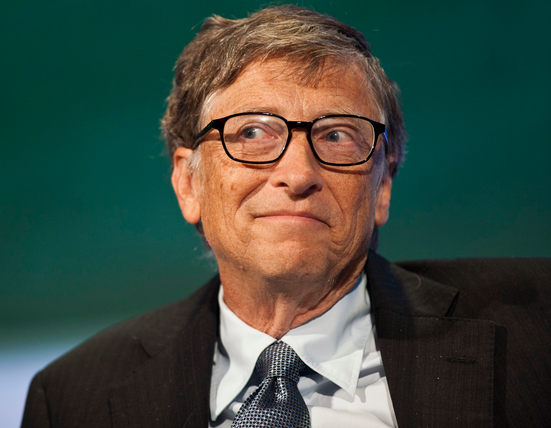 NEWS
NEWS
 NEWS
NEWS
 NEWS
NEWS
![]() Microsoft’s choice of Satya Nadella as its new CEO has been widely applauded as a brilliant move, but less uncertain is the wisdom of the new leader’s decision to bring back Bill Gates into the fold.
Microsoft’s choice of Satya Nadella as its new CEO has been widely applauded as a brilliant move, but less uncertain is the wisdom of the new leader’s decision to bring back Bill Gates into the fold.
Having stated time and again that he intended to spend the rest of his days heading up the Bill & Melinda Gates Foundation, the Microsoft founder was quick to reverse that decision when Nadella came calling. Nadella is said to have personally asked him to take on a role as the company’s new “technology advisor”, which will “substantially increase” the time he spends at Microsoft.
Nadella has garnered a lot of respect for his successful leadership of Microsoft’s business and cloud divisions, but this is nothing compared to the reverence afforded Gates. The man who gave birth to the company would often spend weeks in isolation at his waterfront cottage, contemplating Microsoft’s future and coming up with new ideas that would transform the company, as described by the Wall Street Journal. Such was Gate’s impact that Microsoft saw fit to replace him with no less than 43 people to try and achieve the same results.
At the time of his departure, Microsoft insisted that Gates would still play a very important role at the company, even though he was spending the majority of his time running the foundation. But while he may have chipped in with his thoughts on the firm’s various products and strategies, Gates was clearly spending a lot less time involved in the decision-making process – and that has arguably been to Microsoft’s detriment.
In an interview with MarketWatch, IDC analyst Crawford Del Prete says that Microsoft now realizes it needs to make far better use of Gate’s talents:
“I think what Microsoft is trying to signal is that tying up Bill Gates as chairman and doing all the things a chairman does maybe not the best use [for him],” Del Prete told MarketWatch.
“[Microsoft is saying] We see tremendous value in the vision of Bill Gates and we want to use him in a unique way. There’s a reason Microsoft got as far as they did under Bill Gates. They would be smart to recapture some of that elixir.”
Del Prete likens Gates return to that of Steve Jobs, who assumed the role of CEO at Apple for a second time in 1997 after more than 12 years away from the company.
“When Steve Jobs went back to Apple, I don’t think he spent a lot of time with the compensation committee or HR,” said Del Prete.
“He spent a lot of time sussing through the products and saying, ‘What do we have here? What are we building?’ Using Bill Gates to think through some of those product innovations is a smart way to use him.”
Given that Nadella has never been the CEO of a major company before, it makes sense to have someone who has done so to help steer him through the ‘honeymoon period’. But there’s a danger, what with Gates being so heavily identified with Microsoft, that he could easily overshadow the new CEO, both publicly and internally.
Nevertheless, it’s been said that Gates and Nadell enjoy a very close relationship, and Nadella personally asked Gates to assume his new role. In an ideal world, Gates will help lend some authority to Nadella’s decisions as he strives to, in his own words, “ensure that Microsoft thrives in a mobile and cloud-first world.”
THANK YOU